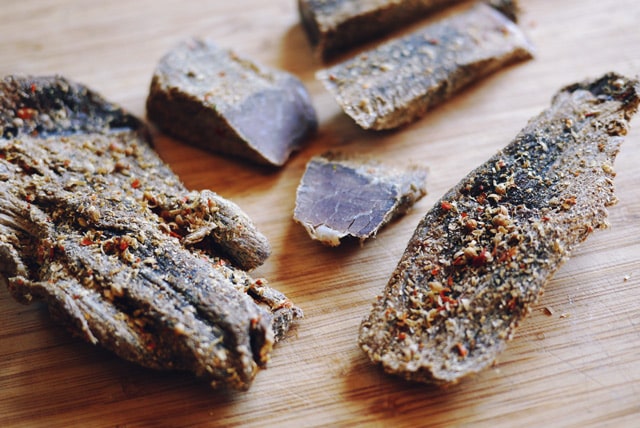

What do you get when you leave a paleo, a gypsy and a South African alone in the Milkwood Farm kitchen for 5 minutes? Plans for making Biltong, that’s what.
Biltong is a South African delicacy composed of salted, spiced dried meat that is super easy to make at home. And now we’re all a little bit addicted.
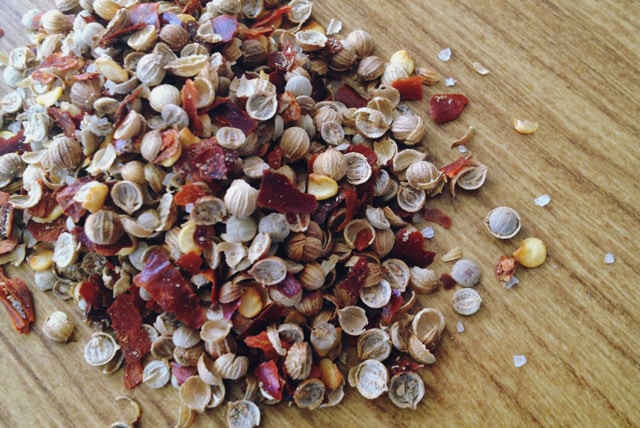
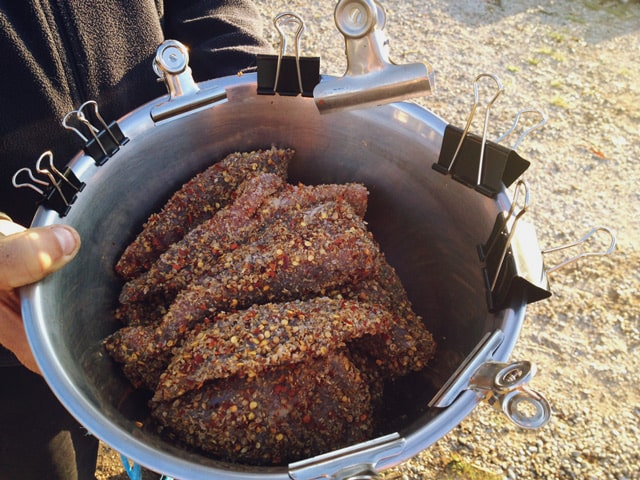
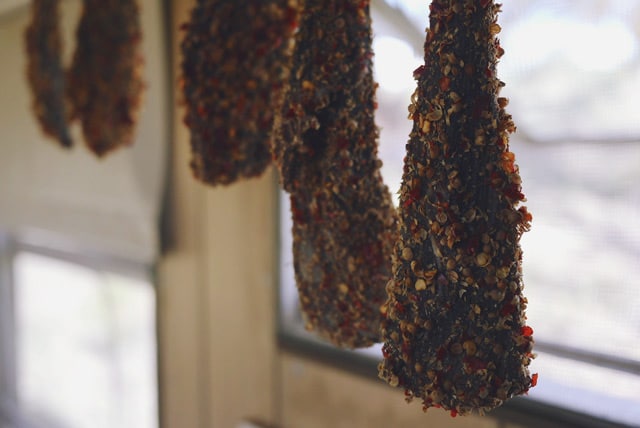
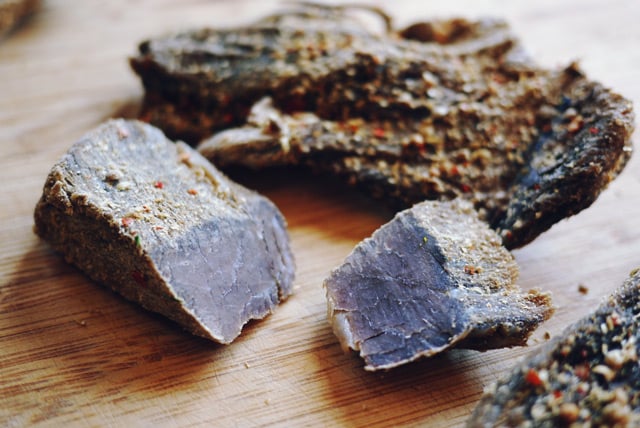
This biltong was made using beef backstrap, on account of no Mudgee butcher stocking kangaroo backstrap (I’ve learned not to ask anymore after getting told off for asking to buy ‘roadkill’).
Actually, on the odd and rare occasion when we’ve hit a kangaroo on the back roads of Mudgee, we have brought it home, butchered it and cooked up what we can.
We figure it’s a far better use of wild protein and energy rather than leaving it on the side of the road.
But this week, there was no kangaroo backstrap about – I guess we’re getting better at swerving. So we used local Mudgee beef.
Other cuts used for beef biltong include silverside. Actually, you can make biltong out of just about anything – beef, roo, lamb, even fish.
Such is the nature of vinegar, salt and meat when combined in this way.
Charl, the resident South African who was wwoofing at Milkwood at the time, was in charge of the recipe:
– Cut meat along the natural grain, into strips about 1 cm wide
– Soak meat overnight in vinegar
– pat meat dry and season with biltong spices – coriander (mandatory), chilli (optional) and salt and pepper.
– hang meat up in a airy, fly-proof space for 4-7 days until as dry as you like it – some like it ‘wetter’ than others.
– often the meat is skewered to let hang, but we used bulldog clips and string. Whatever works, I say.
For the drying phase you can get special biltong driers if you are unsure about a good result (humidity being the natural enemy of biltong). Or you could use a food dehydrator on low, or a gas oven with the pilot light on, or a warm, airy space in your home.
In the dry climate at Mudgee, humidity and airflow was not an issue. The only thing we had to worry about was the flies.
Our solution: biltong caravan! We hung the biltong in one of our little accommodation caravans on the hill with all the windows open (but flyscreened), where it happily dried in a fly-free environment for the next week.
If you don’t have a spare caravan on a hill, there’s plenty of DIY plans out there for making a wooden or cardboard biltong box too.
Most options for a biltong box involve an electric fan of some kind, but if you’re wanting a passive energy approach, you could go old-school and hang your biltong in the rafters somewhere in a flyproof bag, or investigate the wonderful world of DIY solar dryers.
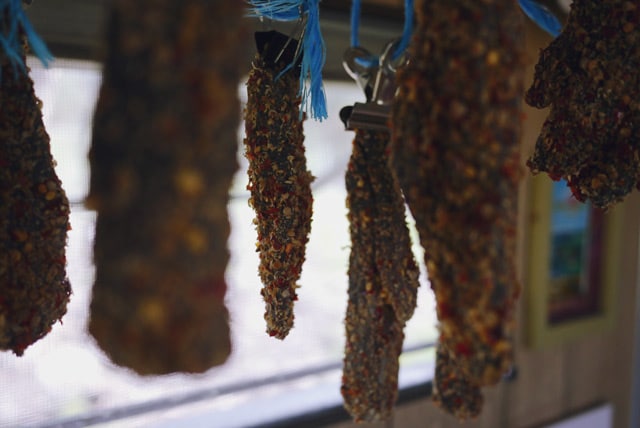
The Fly-free caravan, bulldog clips and baling twine biltong drying technique. We’re all class.
From my research I think this recipe differed from the norm a bit. On the interwebs people talk about using rock salt instead of table salt (so the biltong doesn’t take on such a salty taste). Some also talk about sprinkling the meat with vinegar as opposed to marinating overnight.
Clearly, there’s many ways to approach this technique. But the resultant biltong from the above recipe tasted great – a touch on the salty side maybe, but damn yummy all the same. We sliced it thin and ate it up.
As said above, pretty much any meat can be used for this – I can’t wait to try making fish biltong – mmm – fishy salty coriander goodness.
The end result is a bit like beef jerky, and a bit like proscuttio. If that makes sense. Traditionally I believe it’s for sticking in your rucksack and eating while on adventures.
It would also go well with dried fruit, nuts and fireside beverages when the adventuring is done.
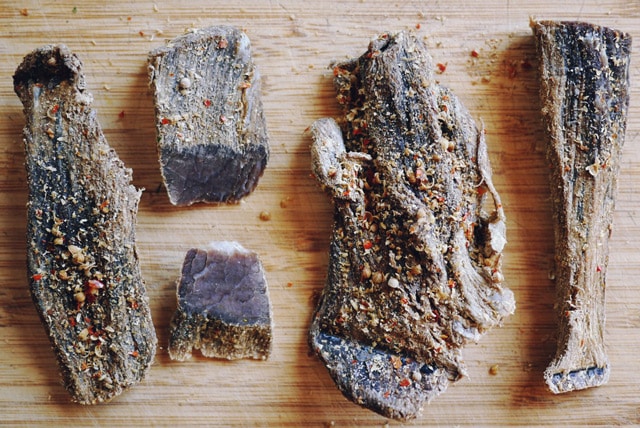
Anyone out there made biltong? Do you have a favourite approach or recipe?
Three cheers for Charl, Brendan + Anji, the Milkwood biltong makers…